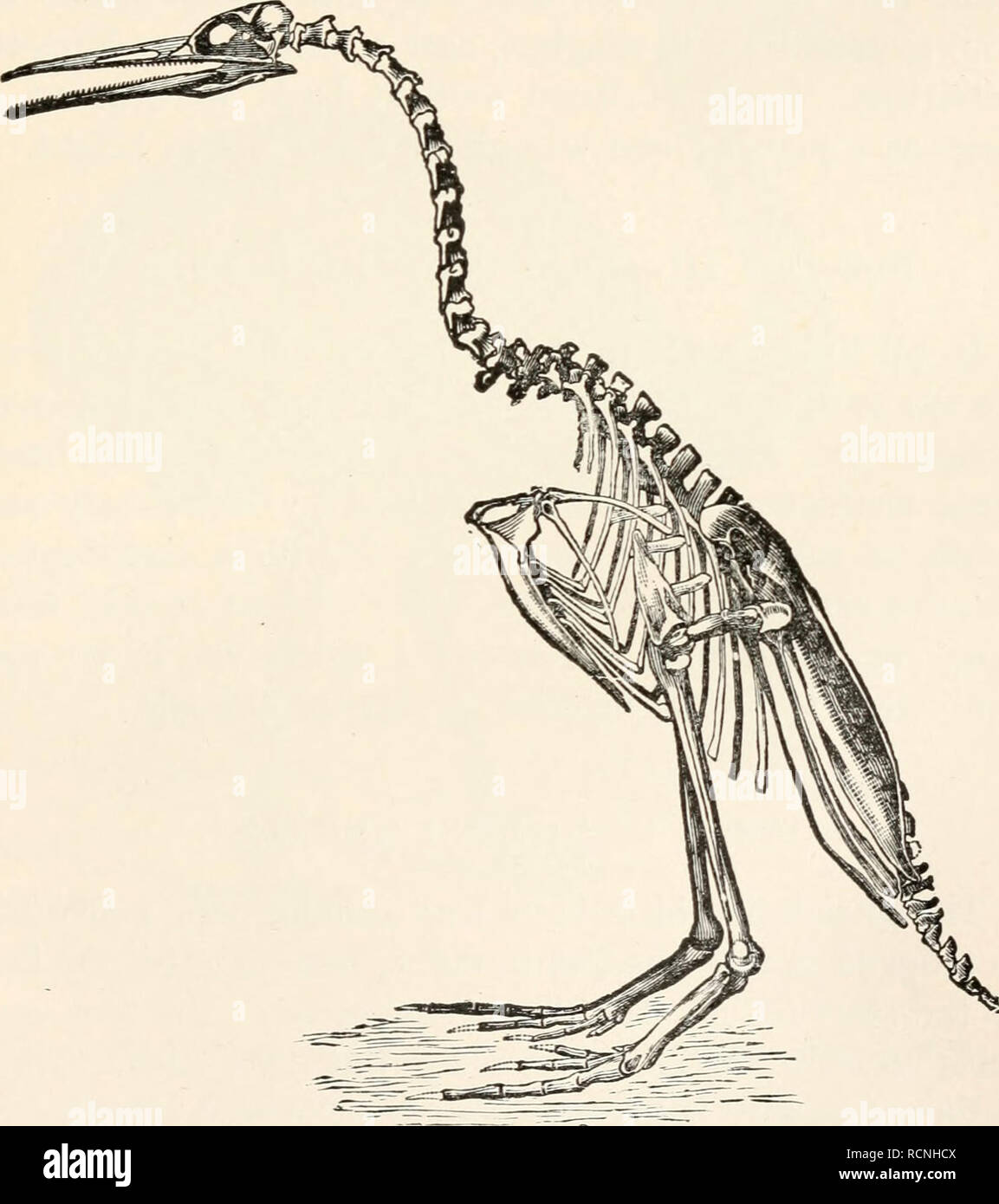. Elements of comparative zoology. Zoology. BIRDS 355 SUBCLASS I.—SAURUR.E (Tailed Birds). These forms, found fossil in the lithographic stone of Bavaria, had tails of extreme length, the feathers being arranged on either side of the long tail vertebrae; and they. FIG. 150.—Skeleton of wingless toothed oirJ (desperornis}. From Marsh. had teeth in the jaws. Only two specimens are known, the smaller being about the size of a crow, the other some- what larger. They are called Archceopteryx.. Please note that these images are extracted from scanned page images that may have been digitally enhanced

Image details
Contributor:
Paul Fearn / Alamy Stock PhotoImage ID:
RCNHCXFile size:
7.1 MB (198.9 KB Compressed download)Releases:
Model - no | Property - noDo I need a release?Dimensions:
1489 x 1678 px | 25.2 x 28.4 cm | 9.9 x 11.2 inches | 150dpiMore information:
This image is a public domain image, which means either that copyright has expired in the image or the copyright holder has waived their copyright. Alamy charges you a fee for access to the high resolution copy of the image.
This image could have imperfections as it’s either historical or reportage.
. Elements of comparative zoology. Zoology. BIRDS 355 SUBCLASS I.—SAURUR.E (Tailed Birds). These forms, found fossil in the lithographic stone of Bavaria, had tails of extreme length, the feathers being arranged on either side of the long tail vertebrae; and they. FIG. 150.—Skeleton of wingless toothed oirJ (desperornis}. From Marsh. had teeth in the jaws. Only two specimens are known, the smaller being about the size of a crow, the other some- what larger. They are called Archceopteryx.. Please note that these images are extracted from scanned page images that may have been digitally enhanced for readability - coloration and appearance of these illustrations may not perfectly resemble the original work.. Kingsley, J. S. (John Sterling), 1854-1929. New York, H. Holt and Company